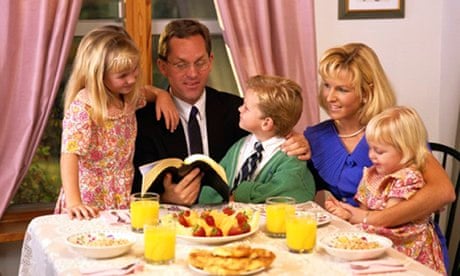In the world of marketing we spend a lot of time thinking about what individuals want and what they care about. But no man is an island. How we behave and the decisions we make collectively are equally important to our quality of life and highly relevant to brands seeking to create a more meaningful connection with their customers.
Married couples with 2.4 kids don't really exist: today, only a quarter of families could be termed "nuclear". Exploring the changing dynamics of the family provides a fascinating context for understanding individuals' choices and the changing role of brands in society.
We've spent the last four months identifying the influencing factors that will shape the family of the future. We have established a set of six forces that are dramatically altering what we will come to define as a "family".
Some of the highlights from the six forces give us an indication of the changing nature of the family: growing megacities with space an absolute premium; collective responses to water, escalating demand for energy and food; evolving career expectations; changing definitions of quality of life.
These forces are creating a diversity of family units that are not necessarily defined by marriage or blood-ties and are unlikely to fit into any of today's consumer segmentations.
By applying these forces, we have created a future segmentation of five families of 2030, which challenge brands to consider what they should be doing today to attract customers of tomorrow.
Tandem Tribes: two single parent families sharing one family home
Each with their own private space within the house, the Tandem Tribes come together to share living and kitchen/dining space. The single parents have a partnership of convenience, living a lifestyle that wouldn't be possible alone, which provides a positive, flexible environment for bringing up children.
A Tandem Tribe home is often part of a micro-community featuring communal facilities such as shared DIY tools and a fleet of electric cars, all in the name of encouraging low-cost, enjoyable, collaborative living.
Modular Movers: nomadic professionals living in convenient, high-service, low-ownership homes
Our single person family, Modular Movers are nomadic. Living in flexible spaces around the world, they don't want baggage or clutter as they move from Sao Paulo to New York to Bangalore whenever they need to.
Home is more like a hotel. They crave practicality – location and convenience are more important than a feeling of home sweet home. Modular living means they choose the add-ons to their living space – if they want a kitchen, for example, or a home office. The megacity is their playground – there's always a reason to be out and about.
Silver Linings: the 70 years+ generation
The Silver Linings are determined to grow old positively. They want to have a laid-back lifestyle with a genuine interaction between generations. They are happy to trade-in previous living arrangements for a worry-free lifestyle that means more stability and simplicity. They use their experience and skills to contribute to the local community and economy. The income they receive in return helps support their day-to-day activities.
Ruralites: hyper-connected families living in rural communities.
The Ruralites are entrepreneurial with comfortable, hyper-efficient and tech-orientated homes. They are close to self-sufficiency in food production and make full use of all available resources, including the production of energy, which ensures they make money from energy rather than paying money for it. Their 3D printer keeps the home working, producing replacement parts for all appliances. The environment that surrounds the Ruralites' homes ensures that kids grow up with imaginations that work on overdrive.
Multi-gens: Multiple generations living under one roof
Their homes may be crowded, but these families depend on support from one another, enabling each family member to pursue their own goals and lead independent lives. Each person pitches in and does their bit so life runs smoothly. These families make use of services like cloud-based family hubs, which divide up tasks and responsibilities between all family members. In some ways they run more like an efficient business than a classic family.
The families of the future raise many questions for sustainability professionals and marketers. How can a brand adapt to families as they form and re-form over time? What opportunities arise from personal space being highly limited? How can we make collaborative consumption a desirable benefit, not a sacrifice? And what will it mean for a brand when the key decision-maker in a family is no longer a single person?
Fiona Bennie is head of sustainability at Dragon Rouge
Join the community of sustainability professionals and experts. Become a GSB member to get more stories like this direct to your inbox

Comments (…)
Sign in or create your Guardian account to join the discussion